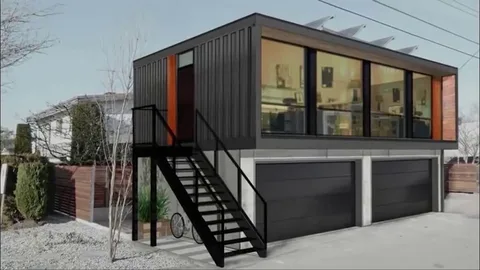Introduction to Prefab Homes in California
California, known for its innovative architecture and progressive environmental policies, is experiencing a surge in the popularity of prefab homes. Prefabricated homes, or prefab homes, are constructed from pre-made sections or modules that are assembled on-site. This method of building has gained traction in California due to its efficiency, affordability, and sustainability. With the state’s growing demand for housing and a strong emphasis on eco-friendly solutions, prefab homes are emerging as a practical choice for many residents. This article explores the benefits, design options, and market trends associated with california prefab homes.
Advantages of Prefab Homes in California
One of the primary advantages of prefab homes is their efficiency in both construction and cost. Unlike traditional homes that can take months or even years to complete, prefab homes are typically built in a factory setting, which reduces construction time significantly. This streamlined process often results in lower costs for both builders and buyers. Additionally, prefab homes are designed with energy efficiency in mind, incorporating sustainable materials and advanced building technologies. This aligns with California’s commitment to reducing carbon footprints and promoting green building practices.
Design and Customization Options
Prefab homes offer a wide range of design and customization options, catering to various tastes and needs. From modern minimalistic designs to more traditional styles, prefab homes can be tailored to fit individual preferences. California homeowners have the flexibility to choose from different floor plans, materials, and finishes. The modular nature of prefab homes also allows for easy expansion or modification in the future. This adaptability is particularly appealing in California, where land use and lifestyle preferences can vary greatly from one region to another.
Market Trends and Future Outlook
The market for prefab homes in California is on an upward trajectory, driven by factors such as increasing housing demands and a push for sustainable living. Developers and manufacturers are responding to this trend by offering more innovative and eco-friendly prefab solutions. Additionally, government incentives and regulations supporting green building practices are further fueling the growth of this market. As technology advances and public awareness of environmental issues grows, prefab homes are likely to become an even more prominent option for California residents seeking affordable and sustainable housing solutions.
Challenges and Considerations
Despite their numerous benefits, prefab homes are not without challenges. One of the main considerations is the perception of prefab homes as being less durable or lower in quality compared to traditional homes. While modern prefab homes are built to high standards, overcoming these perceptions requires ongoing education and awareness. Additionally, zoning laws and building codes in some California areas may pose obstacles to the construction of prefab homes. Potential buyers and builders should be prepared to navigate these regulatory landscapes to fully realize the benefits of prefab living.
In conclusion, California prefab homes represent a forward-thinking approach to housing that aligns with the state’s values of innovation and sustainability. With their efficiency, design flexibility, and growing market presence, prefab homes offer a compelling alternative to traditional construction methods. As the industry continues to evolve and address challenges, prefab homes are poised to play a significant role in meeting California’s housing needs while supporting its environmental goals.



